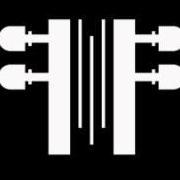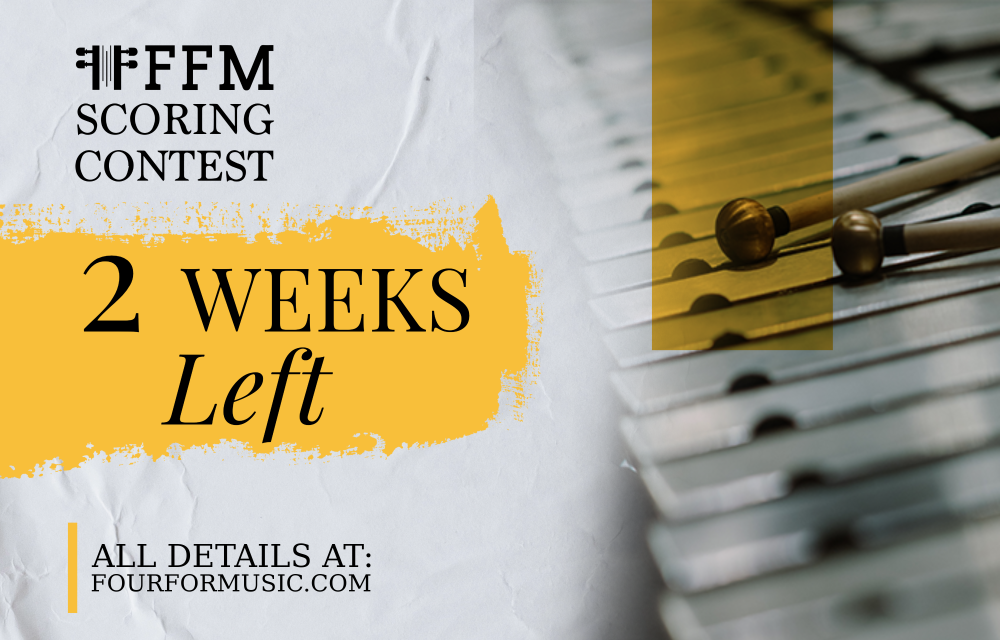All Activity
- Yesterday
-
Matthewlof joined the community
-
Henry Ng Tsz Kiu started following Quick question on percussion part scoring
-
Alex Weidmann started following Quick question on percussion part scoring
-
Hi to all. Just completed a work for a competition, where we had to provide a percussion part score along with the master score. I've sent it off now: so it's too late to change anything; but wondering if I've notated this correctly? I know you often arrange the percussion instruments on separate single line staffs, bracketed together. However I decided to use a single staff for both instruments. This seems more efficient, since they never play together: so I'd be needlessly cluttering up the score to have two parallel staffs. Starting to wonder though, whether I should have had two parallel staffs, for the sake of clarity? Edit: also I couldn't find the correct Italian accent to put on piu mosso. Anyone know how to apply this in MuseScore 4?
-

The Graveyard Shift
AngelCityOutlaw replied to AngelCityOutlaw's topic in Orchestral and Large Ensemble
Hey thanks! Just sharing that this piece, and another unreleased one of mine, was licensed by a film company in Alberta, Canada for their documentary on elaborately-decorated houses and impressive horror collections. You can watch it here! -
Symphony No. 2 - 1st movement
Rômulo Mello replied to Rômulo Mello's topic in Orchestral and Large Ensemble
Thank Thanks!!! I think you've reviewed my first symphony, that I submitted in 2022 -
Symphony No. 2 - 1st movement
Rômulo Mello replied to Rômulo Mello's topic in Orchestral and Large Ensemble
Thanks for all the feedback! I guess I should correct the rhythm problems and add the rehearsal marks before moving on to the next movements. Nice to have tips from an experienced brass player. About the long note on the horns, I wrote it that way because I frequently see that kind of writing in Mozart's works, disregarding completely the breathing necessities. I didn't question Mozart's writing and just mimicked it, although I wonder how horn players would perform it. -
Henry Ng Tsz Kiu started following String Septet
-
I appreciate the feedback! If only my mind were as musical as it used to be... I've lost the ability to quickly identify things of that nature, and appreciate you doing so. I'll take this into consideration moving forward with other works. I'm glad that you were able to enjoy it to some degree, and look forward to more conversations with you all, here 🙂
- 2 replies
-
- 1
-

-
- orchestra
- chamber orchestra
-
(and 3 more)
Tagged with:
-
PeterthePapercomPoser started following String Septet
-
Some Guy That writes Music started following String Septet
-
Hello Guys, I just wanted to share a little septet that I wrote for strings.
- Last week
-
Hello @UncleRed99 and welcome to the forum! I think, for a piece that's based almost exclusively on the Andalusian cadence, this isn't bad! You mix up the chord progression here and there to create some variation from the typical i bVII bVI V progression and you have a key change in the middle of the piece from E minor to F# minor which injects some novelty into the piece. I followed along with the score and I noticed multiple places where you have some incorrect enharmonic spellings. Most of the time you have the right idea in E minor having D#'s as the leading tone. But it seems like you forgot about some of those Eb's. Likewise, in F# minor, the leading tone should be E# rather than F natural. But that's just a nit-pick. You include a lot of variety in the individual parts that keep the piece fresh despite mostly following the same harmonic progressions. Great job and thanks for sharing!
- 2 replies
-
- 2
-

-
- orchestra
- chamber orchestra
-
(and 3 more)
Tagged with:
-
.thumb.png.8b5b433a341551e913a34392660bc95b.png)
Symphony No. 2 - 1st movement
PeterthePapercomPoser replied to Rômulo Mello's topic in Orchestral and Large Ensemble
Hi @Rômulo Mello! I don't remember if I've reviewed your work before or not, but this symphony movement sounds really Haydn-esque to me! I think you totally nailed the form of the movement and the structure lends the music a sound of elegance expected of classical period of music. The themes are catchy and make the music easy to follow along with. Your orchestration, where you use the Horns as a long sustained pad underneath the Strings and Winds is very idiomatic and appropriate for this period. Thanks for sharing! -
Symphony No. 2 - 1st movement
UncleRed99 replied to Rômulo Mello's topic in Orchestral and Large Ensemble
I want to preface by saying that this sounds, and looks, very well done. Though, there are some areas of repetition, it's not too much and is pleasing to a listeners ear. The differences in mode without actually changing the mode, in some areas is also very cleverly done! Overall, the sound of it is pretty great, my friend! However (I know, I'm sorry. lol), In my personal opinion... Percussion parts being written in, such as Timpani, Sus. Cymb., Concert Bass, and/or Grand Staff Marimba, I think, could benefit the piece greatly. I kept hearing bits of percussion parts in my head that would've added much more emphasis on some of the phrasing you have here, and would've overall given it a more grandiose sound, all together. One thing I've noticed... (There's more than one phrase within the composition that does this, but this example is just the one that I see, most conveniently at the time of typing this) on page 27 of the score, in measure 197, for Violins 1 & 2, and Viola, the rhythm notation is incorrect for these passages. If you start a measure in 4/4 with an eighth note, it's typically seen as improper to immediately follow that eighth note with a quarter note. You're essentially notating a quarter note, starting on the up-beat of beat 1, and this is confusing to players, and to anyone reading along, since a quarter note will always start on a down beat, in any given score 😅.. Instead, replace each quarter note with 2 eighth notes tied together. It helps the player to subdivide the syncopation that you have, there. Secondly, a piece this long, really should have Rehearsal marks for when/if an ensemble may pick this piece up to perform at some point. Otherwise, the conductor and players will all have to look at each page, or, count bars to find a specific place in the music to go back and practice through. I usually break rehearsal marks up into sections/sub-sections. (When transitioning to a new phrase/variation of the motif, would be section A-Z, and subsections would be A1-10 - Z1-10 to mark areas of note that involve any variation OF the variation sections, if you understand what I mean by that. Take a look at my piece, here, for reference. Look for A, A1, A2 etc.. You'll see what I mean lol)The Long, Arctic Midnight.pdf Lastly, I observed that the Oboe and Horn parts have a lot of areas where a player may strain themselves early on in the piece, resulting in fatigued embouchure muscles before the piece has ended. This would make for a higher chance of players making a mistake in intonation, or even playing higher pitches with any sort of power or emphasis, nearing the end of the performance. There was also a moment there, in the first section of the piece, within the repeat bars, where the Horn has a very long set of tied whole notes. Players have to breathe! (Unless they learned how to circular breathe, but in my experience, as a trumpeter, most people aren't too privy to having any desire to learn that skill, so not a lot of wind instrument players can do that.) To conclude, the symphony you've written here has a very traditional sound to it, the writing is complex and for the most part, done really well. Honestly, the type of music written here isn't something that I'd ever pull off with any effectiveness... lol but Take what I say with a grain of salt... I'm also someone who's been out of the music game for a long time, and only within the last 6 months have I picked things up again. I'm not even back where I "left off" at. I dropped out of college pursuing a bachelors in Music Theory & Trumpet Performance, after the 1st year, and became a mechanic shortly after. So I'm still kicking the rust off my brain for my music theory knowledge. And have also never been "instructed" in composition methods, and I'm more of an autodidact who can read music well, and who likes to poke around on a score sometimes. Someone else here, with a high probability, would be able to give you even more to consider, than I will, certainly. Anyway. I like what you've done here, and just take my words into consideration at your own convenience. 🙂 Goojahb. 😉 -
UncleRed99 started following Symphony No. 2 - 1st movement
-

Songs from the Dark Dice - 1. Realmweaver's Prelude
Ferrum replied to Ferrum's topic in Choral, Vocal
Travis really nails the theme here and I'm glad that I was able to expand and explore his theme(s) so that I can bring it/them to a much further potential. And I'm glad you like my orchestration too! Thanks for the feedback! -
Henry Ng Tsz Kiu started following 2024 Halloween Challenge Video Posted
-
expert21 started following Songs from the Dark Dice - 1. Realmweaver's Prelude
-

Songs from the Dark Dice - 1. Realmweaver's Prelude
expert21 replied to Ferrum's topic in Choral, Vocal
Kia Ora @Ferrum I love this! Like Peter I think the main theme of this song is awesome and I love how you treat it in so many different and interesting ways. I also love you're orchestration and how you share the theme around the instruments. Such a great piece! Nga mihi, Arjuna -
Hi @Bjarke! This piece sounds like it would have been a great submission to our "Dreamscapes" competition. It's for a combination of 1 monophonic (Viola) and 1 polyphonic (Piano) instrument and sounds quite dreamy! To be nit-picky, the way you've written this rhythm is a bit confusing: Even though the piece is in 6/8 this rhythm is a 3/4 hemiola and so should be organized as three pairs of 8th notes. Thanks for sharing!
-
.thumb.png.8b5b433a341551e913a34392660bc95b.png)
Relaxing Modern Piano Piece - First Draft
PeterthePapercomPoser replied to Aled Edwards's topic in Piano Music, Solo Keyboard
Hi @Aled Edwards! I love how you start on the subdominant chord of the key! The walk down the scale to the tonic is nice as well. Then you insert a great transition in whole-tone scale. I would love to see sheet music for this! There are so many interesting harmonic twists and you manage to return to the beginning seamlessly. Very nice! Thanks for sharing. Edit: It would be a really great track in a video game owing to how well it loops. -
Hi again @ComposedBySam! I usually try to stay away from the descriptor "jazzy" unless you're actually writing something along the lines of jazz (which some claim can't be done since jazz is supposed to include some semblance of improvisation). This is clearly a classical work with extended harmony but I wouldn't say that there's anything particularly "jazzy" about it. Lots of different types of music use extended harmony not just jazz (more notably neoromanticism). I like how I can hear your individual melodic voice in this piece - there's a sense of this music being a relative of your "Escapist" Dreamscapes contest entry, since you used a similar instrumentation of Piano and Cello. Btw - in chamber music the solo instruments go on top of the accompanying instrument. So, in this case, Clarinet and Cello should both be above the piano. Any particular reason you chose to process the audio the way you did? Are you aiming for this piece to be a lo-fi track? Thanks for sharing!
-
Henry Ng Tsz Kiu started following Sonata nr 5, first movement
-

Symphony in d minor
mercurypickles replied to mercurypickles's topic in Orchestral and Large Ensemble
Please forgive me for being a bit defensive! It can be difficult not to leap to die for my choices when I feel I’ve done something right, but like I said, there is different art for different people, and I greatly respect and appreciate your following up. This is my favorite movement in the piece! I’m so glad it came across well for you, I’ve had some very mixed reactions to that movement because of the rather unusual form. (Ternary and sonata form superimposed with the sonata form layer have a reversed recapitulation.) Yes they are! I’m aware and I need to fix them but I haven’t quite figured it out yet - if you have any suggestions I’d love to hear them. -
PCC started following Sonata nr 5, first movement
-
The whole movement sounds very "safe", almost too much for my taste. But I like the harmonic territories you explored. The 2/4 section feels like it doesn't create enough contrast with the outer parts of the movement (perhaps it's part of the "safe"ness I was talking about). The score notations are a bit off imo so i had to rely on your computer generated playback instead of imagining the sound with my reading of your score, and you know playback has its limitations in delivery compared to live performance, so I don't think my comments here are the fairest, but here we go. Indeed there are issues with enharmonics (e.g. as early as bars 3-4) but I won't go into detail. I have a problem with visually essential rests being removed (compared bars 16 to 24). Bars 44 (and similar places), if, according to the playback audio, I feel like in the lower staff the fourth and eighth quaver "belongs" to the lower voice instead of the upper voice, to mirror the melody, but feel free to disagree. Overall I feel like this is something you can potentially work on to become a multimovement piece, I am eager to see the progress.
-
.thumb.png.8b5b433a341551e913a34392660bc95b.png)
Symphony in d minor
PeterthePapercomPoser replied to mercurypickles's topic in Orchestral and Large Ensemble
Notice that I said "I perceive this as a bit uninspired" and "I perceive this piece as a-thematic." I'm not accusing you of anything but simply trying to convey my experience of listening to the movement as a listener. I think my experience is valid and telling me that I've "missed the point" isn't going to change it. I offer up multiple theories and explanations as I search for a reason why this may be happening. I usually try to explain why I perceive the music a certain way by referring back to the music itself. But there are also internal reasons for why I perceive your symphony movement this way - that I am myself a very thematic composer. I usually find it difficult to justify the presence of sound in the absence of themes/melodies. I perceive the 3rd movement as definitely being more driven and motivically based. You repeat the motives more here, I think giving the movement more coherence for me. There are some very lyrical sections with long leading melodic lines in the middle slower part, with many contrapuntal lines interweaving. There is some beautiful interplay between the Strings, English Horn and French Horn. There is also some striking use of dissonance. On the whole I enjoyed this movement much more - great job! Edit: some of those really fast pizzicato passages near the end of the movement seem very unidiomatic and impossible to play! -

Symphony in d minor
mercurypickles replied to mercurypickles's topic in Orchestral and Large Ensemble
Thank you for taking the time to listen and leave a comment! All I have to say about this is that I feel you’ve missed the point of the movement. Yes, it is rather abstract, and that is by design. This movement was originally written as a contrapuntal exercise which simply grew into something more. As such, it simply doesn’t rely on traditional melodic mechanisms or standard-fare romantic period harmonic structures. In many ways this piece has much more in common with renaissance counterpoint than most other symphonic music I’ve come across. If you’re looking for a “big tune” try listening to the finale, though if you consider this first movement incomprehensible then you may have a difficult time understanding the form of the finale. As for the accusation of, “indiscriminately entering notes into the sequencer,” I take some frustration. You do not know my process, so why insist on saying something so blatantly polemical? I fail to see the value in repeatedly saying things like that, as well as calling the music “a-thematic.” For your information, this movement took me nearly 8 months to complete, it was a tremendous amount of work, and I don’t take what seems to be largely unjustified criticism lightly. If you don’t like a piece of music, that’s fine! There’s plenty of music by very famous composers that simply doesn’t speak to me that I largely find no value in. Not all art is for everyone, we all have different things we prefer over others and I would hate to be someone that would force you to listen to something you don’t enjoy! But with that said, find something more grounded in the score to criticize than something along the lines of, ‘well, it’s not Tchaikovsky and there’s not a big obvious melodic gesture so the composer must not know what they’re doing.” (Yes I realize that’s not word for word what you said, but it’s not exactly far off either.) Again, thank you for taking the time to listen, as well as giving me the opportunity to spell out my feelings toward critics. 😉 -
Hello everybody, Here is the first part of a new piano sonata. The piece is maybe not in accordance with the formal sonata structure, but for the moment, I could not find a better title. In any case, my plan is to write two additional movements. My inspiration for this piece came from a well- known Swedish folk song. I used fragment of this song in the first eight bars, and then, I departed from it. Also, I attempted to use some more modern (a kind of jazz-like) harmony here and there. I am curious to know what you think of this. You will notice a further development of early motifs, for example in bar 125 and 137.. The latter is re-stated in bar 157-164 (including a sort of extra repeat), which serves more or less as an announcement of the approaching end of the piece. It took me a long time before I managed to write the ending. The break-through came when I added bar 169 and 170. A direct transition from bar 168 to 171 is of course also possible, but I think that this would be a bit boring. There is certainly a need for a revision of the score. Particularly regarding the issue of enharmonic spelling (Henry?). I would be very grateful for corrections and/or suggestions
-
**Edit** Updated PDF and MP3 to corrected version. Realized there were some mistakes I missed in post composing... Feedback would be much appreciated... The Long, Arctic Midnight.pdf 21414802.mp3 My project with writing in 11/8 Time is complete! Here's the final product :) byu/UncleRed99 inMusescore This is the completed score audio and PDF for reading along, or, follow the link above to a reddit post with the score video included. 🙂
-

FFM Scoring Contest is now open
Four For Music replied to Four For Music's topic in External Competitions
-
Hi @olivercomposer! Great piece and tutorial! To clarify, I think that the part between 0:20 and 0:52 should be in 6/4. The reason for that is because the harmonic rhythm and phrasing seems to be encapsulated in 6 beats not 3. But the rest of the piece does work with 3/4. Thanks for sharing how you made this!
- 1 reply
-
- 1
-

-
- music tutorial
- composing tutorial
-
(and 2 more)
Tagged with:
-
Hi @Cafebabe! I'm surprised I found one of your YT videos that hasn't yet been privated! LoL I think you use some of the harmonic devices in this piece a bit unidiomatically for the period. The kind of half-step rubs you have between the two oboes for example should resolve by the bottom voice going down a step creating a 3rd. Keep composing!
-
.thumb.png.8b5b433a341551e913a34392660bc95b.png)
Sonata quasi Una Fantasia in c# minor
PeterthePapercomPoser replied to CelvinPiano's topic in Piano Music, Solo Keyboard
Hello @CelvinPiano and welcome to the forum! I think this piece shows great facility in your playing as well as your compositional prowess! The part where the left hand keeps skipping above and below the right is an especially great technique. My favorite part compositionally is the many florid fioraturas up and down the keyboard and especially exploring the Neapolitan chord as if it's the subdominant of A major. That's a really great way of tonicizing the bVI chord! Thanks for sharing and I hope to hear more! -
.thumb.png.8b5b433a341551e913a34392660bc95b.png)
Symphony in d minor
PeterthePapercomPoser replied to mercurypickles's topic in Orchestral and Large Ensemble
Hi @mercurypickles! 1st movement - I perceive this as a bit uninspired. Throughout the movement there is scarcely any chromatic inflection to the material. It's mostly diatonic and falls flat in sustaining melodic interest. I just finished listening to the movement and I can't whistle or hum a single theme. I think it's not very memorable because the pitches have been treated a bit indiscriminately. It lacks direction from the material itself. The crescendi and tutti sections aren't justified by the melodic material and instead serve to ornament a piece that lacks drive and direction. On 2nd listen I think that you start developing and over-complicating the orchestration and counterpoint before you allow the listener to really absorb the themes first. That might be why I perceive this piece as a-thematic. This might also arise out of just indiscriminately entering notes into the sequencer. It doesn't seem like you've streamlined this composition to really achieve its maximum effect with the notes you have. There is both not enough repetition and too much repetition. You repeat mundane and unimportant seeming ostinati while creating giant crescendi that don't really lead anywhere. But you don't seem to repeat (repetition with variation is very important in establishing the main themes) the themes enough for them to seem substantial and important enough to the listener to be remembered. It gives the movement a sort of sense of marking time. These are my thoughts about this movement. Thanks for sharing!



